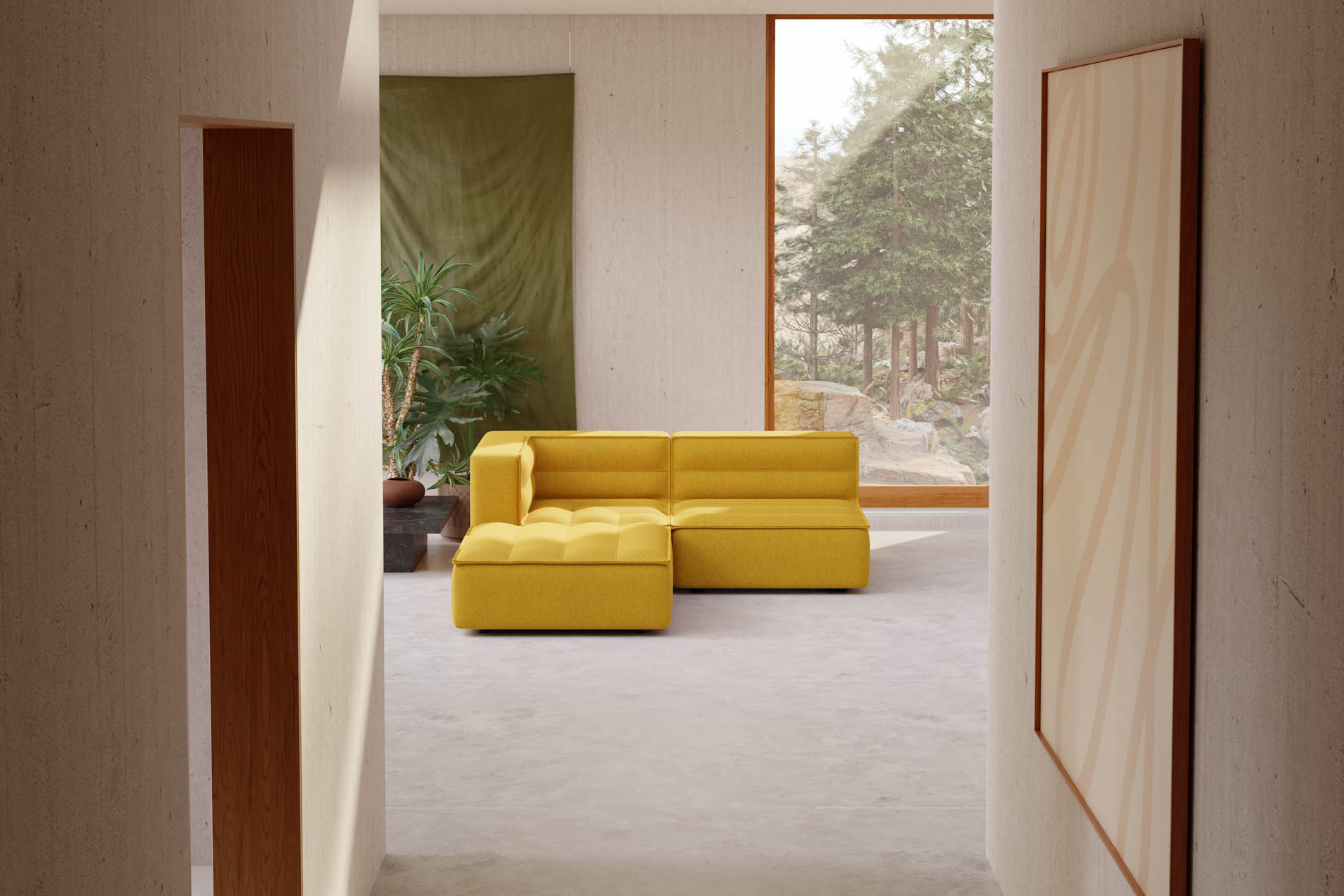
Meet Part & Whole: Modular Furniture Made to Last
“We want our products to remain in use indefinitely.”



For Nathan Martell, good design is more than simply the sum of its parts. He launched direct-to-consumer design company Part & Whole last year with a few (very talented) friends and a mission: thoughtful, modular furniture with longevity of use at its core.
Upon admiring Nathan’s latest release—Chord, a modern take on the low lounge sofas of the 1970s—we tracked him down to chat all things Part & Whole: his inspiration for setting up shop, his impressively stacked team of design professionals, and what’s next for this up-and-coming Canadian company.
We love the name/ethos behind your brand. Not only is “part & whole” symbolic of your modular couches, but it represents the idea that nothing exists in isolation. Can you tell us more about the company and how it started? Was it the result of a fruitless search for the perfect sectional?
“Funnily enough it was actually kind of the opposite—there are so many wonderful sectionals already in the world! I view the larger opportunity for innovation more in the industry itself. Furniture is a large, complex, and often slow-moving industry and we’re trying to approach things from a new direction with Part & Whole.
“We’re not only putting a focus on designing contemporary furniture, but also on producing and presenting it in a contemporary way. This, in a way, comes back to the name, which acknowledges and explores this idea that everything is connected. I’ve found that it’s the underlying relationships between these connections that often yield the most interesting opportunities for innovation.”
You’re currently featuring two distinct modular sofa systems: Total and Chord. Can you give us brief intros to both?
“Total and Chord represent two different interpretations of modularity. For Total, we really pushed the component-based approach as far as we could. It’s truly a kit of parts that can be configured and reconfigured into endless arrangements. However, this modularity is not overt and generally remains hidden in the finished assemblies. Chord, on the other hand, was born out of a much more direct approach. It’s visually intuitive how to build through the graphic nature of the quilts, and its modularity remains on full display.”
It’s worth noting that you handle all prototyping, patterning, and sewing in-house. In fact, you meticulously assemble your products at your Vancouver Island facility before shipping. Also impressive is the fact that your products can be reduced to their basic components and easily reupholstered or recycled. Can you expand on what sets Part & Whole apart from traditional furniture companies?
“In the simplest terms, we want our products to remain in use indefinitely, and by maintaining control over the key aspects of their development and production, we feel like this is an attainable goal. For us, implementing a circular approach means not only designing and producing products that can be serviced over their lifetimes, but also making the process of replacing or repairing a part a simple, normal thing.
“And being direct-to-consumer gives us a one-on-one relationship with our customers, which allows us to move some of these core circular design concepts from theory into practice—something that would be very difficult for a more traditionally-structured company.”
You’ve assembled a top-notch team with diverse expertise. Tell us more about the people behind Part & Whole.
“We’re a little unconventional in how we’re structured—with myself included, there are seven owners in all. Building a company is kind of a crazy thing, and a furniture company perhaps even more so. I made a decision early on that if I was going to try and do this, I was only interested if I could do it alongside a dream team of partners.
“It was Ross Taylor and me in the beginning, and we managed to convince a group of incredible people to join us along the way. Steve Suchy has been is instrumental in our product development and the design of our first two collections. Tom Chung helped shape the creative direction of the company and our approach to product as a whole, in addition to designing a couple of amazing collections that have yet to be released. Alex Nelson and Beau House (who run the creative agency Post Projects) created our visual identity and website, and continue to collaborate on all of our visual communication. And Guy Ferguson is responsible for all of our photography, while also leading our marketing and special projects. I often talk about product being our number one thing, but in reality, it is the team.”
What’s next for Part & Whole? Do you plan to produce complementary home furnishings in the future, like lights, shelves, or magazine racks?
“In addition to Tom’s aforementioned sofa collections, we’ll be launching a sub-brand called Loose Parts later this spring. Loose Parts will be a platform for exploring smaller more experimental work, editions, and collaborations with our community. The first release is a project with Nigerian designer Nifemi Marcus Bello and Lichen in New York. We’re also working with Vancouver-based clothing brand James Coward on a workshop coat, which will become our factory uniform and sold in a limited-run.”
